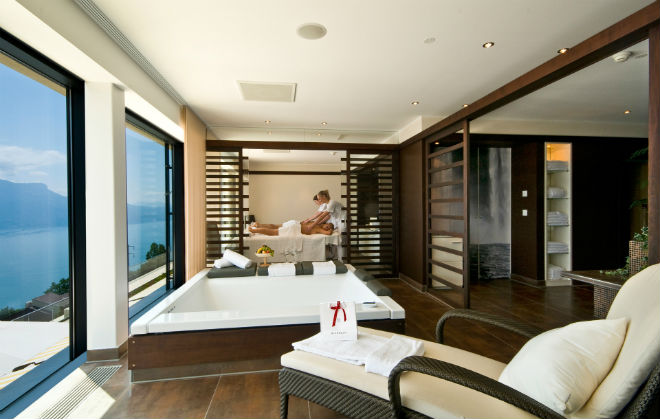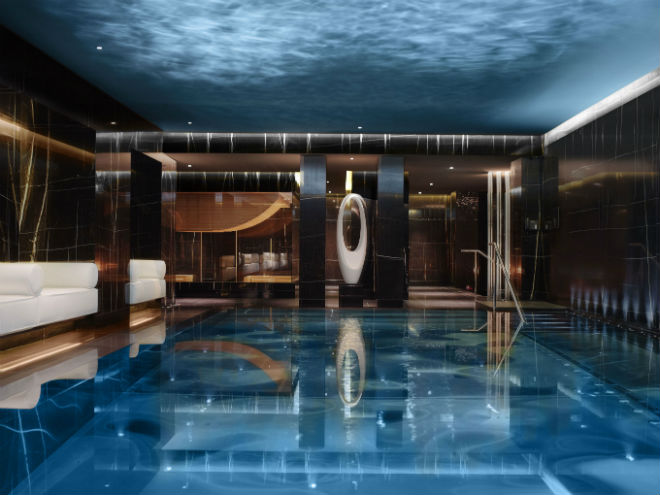P for prevention
As prevention continues to gather strength in the global spa industry, we take a closer look at the movement and ask why the UK market has been less than speedy in joining it
WORDS NORA ELIAS
As buzzwords go, prevention has been one of the biggest in the spa world for the past few years. Already on the rise, the concept’s profile was further heightened by its appearance on SpaFinder Wellness’ list of the top global spa trends to watch in 2010.The world’s population is rapidly ageing − UN data released earlier this year showed that one in nine people are now over the age of 60 and this figure is expected to rise to one in five by 2050. This means there are now more of us needing to stay healthy for longer than ever before. Add to this a global economic crisis that has underlined not only the health-related but also the financial benefits of a preventative approach and it quickly becomes evident that there are multiple reasons for the emergence of this trend.
“We have been watching the spa industry’s evolution for decades and one of the most powerful trends we’ve seen is the pendulum swing from the industry’s emphasis on pampering to the new emphasis on prevention,” says Susie Ellis, president of SpaFinder Wellness. However, Ellis also points out that the industry has in fact always been prevention centric, with much of what spas offer, such as relaxation, detox and de-stressing treatments, falling within this bracket. The difference, she adds, is that it’s only recently that the public has become aware that what spas provide is often preventative and that spas themselves have begun to market their services in this way.
Promoting prevention

“Spas have always been about prevention, but they weren’t yoking this term to what they did five or 10 years ago. Stress reduction, relaxation treatments, weight loss and healthy nutrition; these are medically proven to be effective in the prevention of chronic disease and this list is, of course, what spas have been doing for decades,” Ellis says. “The sea change is the perception that this is what is happening in spas and the fact that spas are more smartly and aggressively communicating that much of their core offering is prevention.” Nevertheless, while spas are now taking steps in the right direction in terms of putting prevention in the spotlight, Ellis believes they’re not yet doing enough.
“Spas still need to do more to highlight prevention and broadcast the positive medical evidence on what they do,” she says. Spa consultant Berni Hawkins, chair of the British International Spa Association and a partner at the Neue Skin clinic in London, agrees that spas often fall short when it comes to accentuating the health value of what they offer. “There are huge benefits to things like using the sauna or steam room before a massage or after exercise but we don’t tell people about them,” she says. “As an industry, we don’t educate people about the benefits of spa. We sell one-offs and do things in isolation, rather than intrinsically link them for customers.”
Pampering meets prevention
Hans-Peter Veit, spa manger at the five-star Brenners-Park Hotel & Spa in Germany’s Black Forest – a property with a decades-long tradition of a health and medical focus and both a spa and a medical spa on its premises − comments that a focus on prevention certainly doesn’t rule out the inclusion of pampering. In fact the two not only can, but should, co-exist. This is, he says, particularly true of high-end destination resorts. “You have to pamper the guests as well. It’s a must for a luxury hotel to have an excellent spa with pampering treatments, if you don’t, you won’t get customers.”

For resorts like Brenners, largely dependent on foreign guests, simply relying on an indulgent spa offering is not enough however. “Pampering treatments are a nice add-on but these days they are never the reason guests come to a spa from far away,” Veit says. “There are so many world class spas offering pampering treatments all over the world.” What guests are willing to travel for, he adds, is the right treatment or the right doctor. “The reason people come to us is the medical spa but, once they’re here, they use all the facilities in the hotel spa and go for pampering treatments as well.”
At Le Mirador Kempinski Lake Geneva, which hosts both a Givenchy Spa and a Wellness Medical Center on its premises, pampering and prevention also exist in unison. The concept behind this, as spa manger Aurelly Boyer explains, is that “prevention is fully integrated into a global awareness where the idea of offering moments of pampering entirely finds its place.”
The UK market
While it would be an exaggeration to say that the prevention movement has bypassed the UK, most industry professionals agree that the country’s traditionally more pampering-focused spa sector has been slower to respond to the trend than markets such as the US and mainland Europe. “The UK is still way behind Europe, but of course Europe has a more recent history of wellness; of taking the waters and going to the mountains to take the air,” says Louise Westra, naturopath at wellbeing-focused health centre ESPA Life at Scotland’s luxurious Gleneagles Hotel. “The UK had that tradition as well, but it’s been lost, whereas Europe retained it.” Researching the field prior to taking up the position at ESPA Life, Westra says very few UK spas showed an inclination to take the prevention route.

“I approached a number of quite high profile spas and they weren’t interested, it wasn’t a direction they were taking at the time,” she says, adding that: “I think it’s now happening tentatively however, perhaps because properties like Gleneagles have led the way and shown that it is a viable approach.” Spa owner Maxine Stead, who set up Alexandra House Holistic and Wellbeing Spa in Huddersfield in 2007, also believes that the UK has been slow to heed the prevention call. “Prevention has only become a trend within the UK spa industry to a small degree, perhaps because people see spas as a place for pampering rather than wellness and prevention,” she says. Stead is, however, confident this will change. “I do think this is a growing area and at Alexandra House we will certainly be actively promoting our treatments as preventative.”
The long-term view
Those working in the destination and medical spa sectors are keen point out that an integral aspect of prevention is ensuring treatments are part of a fully rounded programme that guests can continue once they return home. “People don’t come here only to have a relaxing experience, the chosen massage or treatment is integrated into a long-term approach,” Boyer says. Dr Nyjon Eccles, medical director at the recently opened Vita Health Wellness Centre at the Verdura Golf & Spa Resort in Sicily, reinforces this. “It’s about better health and wellbeing once they leave the spa. The basis of the four programmes we run, the Better Ageing, Detoxification, Stress Management and Weight Loss programmes, is to not just make them feel better while they’re here but to extend that wellness beyond their stay,” says Eccles, who in addition to overseeing the Vita Health Wellness Centre, which opened in September, is also the owner and medical director of the Chiron Clinic on London’s Harley Street.
Voicing the view of many in the spa industry, Dr Eccles adds that one of the key drivers behind the advent of prevention is the failure of conventional medicine to adequately address early detection. “Doctors in general don’t spend much time advising people about lifestyle choices that can prevent disease,” he says. “The medical profession is focused on treating disease rather than preventing it and even the former we don’t do very well. People are becoming aware that to achieve better health, they have to do something themselves,” he continues. “That creates an opportunity that spas can seize.” This is a sentiment that is echoed by Ellis. “Hospitals and traditional medicine have mostly been about treating sick people but spas are emerging as places where people who don’t want to get sick, go to stay well.”
Summarising not only the outlook on prevention practiced at the Vita Health Wellness Centre but also his personal viewpoint, Dr Eccles says that it’s about “an ethos of early detection, picking up things that aren’t otherwise routinely measured, with a view to taking people off a track of potential ill health.” For her part, Westra comments that at the heart of it, prevention is about helping people live their lives in a way that is as healthy and as balanced as possible. “It’s about giving people the tools to cope with life; educating them about what they need and allowing them to put strategies in place that will have long-term benefits,” she says.

